If you have ever had a migraine, you know how debilitating they can be. A migraine is an intense, throbbing headache. They can cause nausea, dizziness, visual auras, and sensitivity to light and sound. Migraines can last hours, even days. Here are 12 things you should know about migraines and how to treat them:
1. According to the American Migraine Association, migraines affect 36 million Americans, or approximately 12% of the population[1]. This includes men, women, and children. If you experience migraine pain, you are not alone and there are treatment options available for you.
2. Migraines can begin at any age, though the first often occurs during adolescence. Migraines tend to peak during your 30s, and gradually become less severe and less frequent in the following decades[2].
3. Migraines are one of the leading serious health problems affecting women. Women are three times more likely to get migraines than men. Women experience migraine pain differently than men. Women report episodic and chronic pain more frequently than men. More severe and more frequent migraine attacks often result from changes in estrogen levels. Research has connected hormones to migraine, but not all migraines are hormonal[3].
4. Many researchers believe that a migraine can be caused by a change in hormone levels in the brain. A migraine is considered a neurological disorder and is not “just a headache”. If you have a family member with migraines, then you have a good chance of developing them too.
5. Stress, bright lights, and certain smells can trigger migraines. Medication and too much/too little sleep can also trigger migraines. Taking painkillers, such as Excedrin Migraine, aspirin, ibuprofen, Imitrex, or Maxalt too often can trigger serious medication-overuse headaches. Medication-overuse headaches occur when medications stop relieving pain and begin to cause headaches[4].
6. Tiredness and insufficient sleep, shoulder or neck tension, poor posture, and physical overexertion have all been linked to migraines. Low blood sugar and jet lag can also act as triggers for migraines[5].
7. Certain food, drinks, and food additives can trigger migraines. For example, alcohol, such as wine, or drinks with a lot of caffeine such as soda or coffee can cause migraines. Food that causes migraines may include aged cheeses, chocolate, and foods containing aspartame or MSG. Skipping meals or fasting can also have an effect.
8. A great way to determine if you are having a migraine versus a headache is recognizing if the pain is felt on only one side of the head. This is a symptom of a migraine. Other symptoms include nausea, dizziness, and visual auras – seeing sparkling flashes of light, spots, or dazzling lines[6].
9. The International Headache Society recommends the “5, 4, 3, 2, 1” method to diagnosis migraines[7]. This stands for 5 or more attacks with a duration of 4 hours to 3 days with at least 2 of the following: occurring on one side of the head, a pulsating quality, moderate to severe pain, and aggravation by routine physical activity and at least 1 additional symptom such as nausea, vomiting, and sensitivity to light or sound. It may be useful to keep a diary of your pain, noting the onset, any triggers, duration, and any noticeable signs leading up to a migraine.
10. Migraines may be treated with pain-relieving medications and with rest in a dark room. People who experience migraines regularly may benefit from taking beta-blockers or antihistamines. These reduce the frequency and severity of the headaches.
11. Botox for migraines might also be a great treatment for you. When injected in small doses, Botox is very good at blocking nerve signals. It can block the nerve signals that are linked to some headaches. When these are blocked, you won’t feel the migraine. These injections can help stop migraines before they even start. We do these types of Botox injections at Spinal Interventions. We perform these injections in our in-office suites, which contain C-arm fluoroscopy, lead-lined walls, and patient monitoring equipment. Our experienced physicians are board-certified in anesthesia and pain medicine. This allows patients to receive safe, appropriate sedation when needed. During the procedure, your doctor gives you a series of injections. They go in specific spots in your head and neck. The needle is small, and the injections are not painful. They feel like tiny pinpricks. The entire injection procedure takes about fifteen minutes[8]. If these injections stop your headaches, you may be asked to come back for more injections every three months. Your healthcare provider can create a care plan that’s right for you.
12. Other treatment options include establishing a balanced sleep schedule, finding manageable ways to cope with stress, eating healthy, and exercising regularly. At Spinal Interventions, we encourage our patients to take part in active rehabilitation programs including diet and daily exercise. Before starting any exercise programs, make sure to consult your physician about what the best plan is for you.
Don’t let chronic pain interfere with your life! Don’t let pain keep you from doing the things you love. Take the first step to living pain free and call Spinal Interventions today at (801) 223-4860 for a consultation.
References:
[1] https://americanmigrainefoundation.org/resource-library/
[2] https://www.mayoclinic.org/diseases-conditions/migraine-headache/symptoms-causes/syc-20360201
[3] https://migraineresearchfoundation.org/about-migraine/migraine-in-women/
[4] https://www.mayoclinic.org/diseases-conditions/migraine-headache/symptoms-causes/syc-20360201
[5] https://www.medicalnewstoday.com/articles/148373.php
[6] https://viewmedica.com/vm/index/brochure/6793/migraines/en
[7] https://www.medicalnewstoday.com/articles/148373.php
[8] https://viewmedica.com/vm/index/brochure/6793/botoxmigraines/en




The pain relief I have received from Dr Stringham’s surgical capabilities is nothing short of miraculous. I have lost nearly all of my back pain, and I have 2 severely ruptured discs and 2 bulging discs in my lower back. I recommend them to any family member or friend that suffers with and back or neck pain. I am so grateful!
Thank you so much for your comment! We hope this post was beneficial for you. Please let us know if there is anything else we can do for you by calling our office at 801-223-4860. Thanks and have a great day!